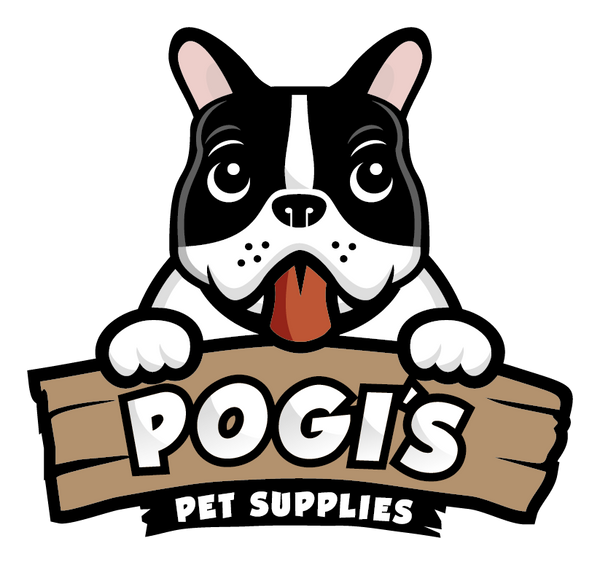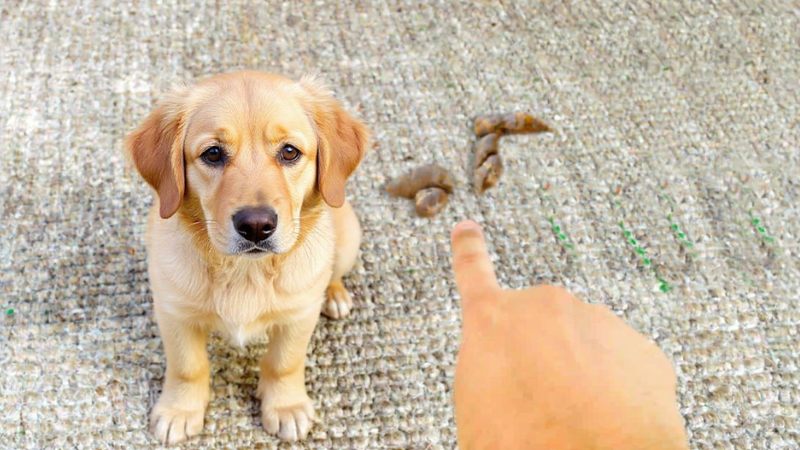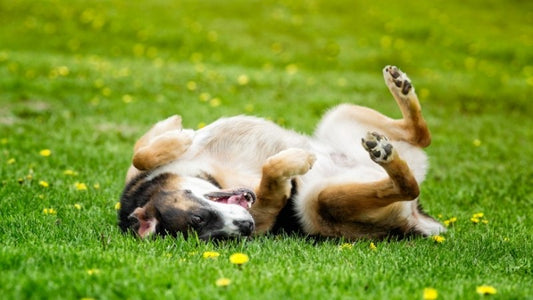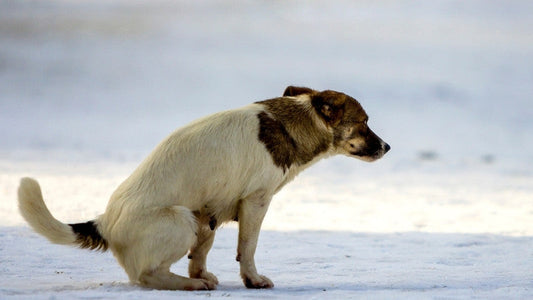If you’ve ever owned a dog, you know the drill. One minute you're sipping coffee, the next you're staring at a mess right in the middle of your carpet. Even the best-behaved pups have their off days, and accidents can strike when you least expect them.
But here’s the thing: that surprise isn’t just smelly or unsightly. Pet feces can contain harmful bacteria like E. coli and salmonella, which can survive in carpet fibers and even spread through contact with waste left on soft surfaces . That’s why it’s crucial to act fast, not just for the sake of your rug, but for your health too.
So, what’s the best way to clean dog poop out of carpet? We’ve got all the tricks, tips, and natural solutions coming up. Stick around, because knowing what to do next can make all the difference.
What You’ll Need Before You Start
Before you grab the closest cloth and panic-scrub the mess, take a breath and gather your tools. Cleaning dog poop out of carpet doesn’t need to be chaotic; having the right supplies on hand can save your rug and your sanity.
Here’s what you’ll need:
-
Gloves (to protect your hands from bacteria and waste)
-
Paper towels or disposable cloths (for blotting and removing excess poop)
-
An enzyme-based cleaner like Nature’s Miracle (to break down protein in pet stains)
-
Warm water (to dilute cleaning solutions and help rinse)
-
Pet-safe carpet stain remover (especially for older or set-in stains)
-
Vinegar (optional—great for neutralizing odors)
-
Old toothbrush or soft carpet brush (for gentle scrubbing without harming carpet fibers)
-
Baking soda or another odor eliminator (to absorb lingering smells)
If your dog has sensitive skin or allergies, natural alternatives might be safer. A simple mix of white vinegar and warm water can work wonders on many stains.
But avoid vinegar on delicate or wool-based rugs—it can damage the fabric or strip color. Always test any solution on a small, hidden area first.
Step-by-Step: How to Clean Dog Poop Out of Carpet

When you find a fresh pile of dog poop sitting on your carpet, time is not your friend. The longer it stays put, the more it seeps into the carpet fibers, turning a small mess into a major headache. That is why acting fast is your best bet.
Step 1: Remove the Solid Waste
Start by putting on your gloves. This is not the time to go in barehanded. Next, grab a few paper towels or use a plastic scraper to carefully lift the excess poop. Be gentle because pressing too hard can push the waste deeper into the rug, making it harder to clean and giving bacteria a chance to settle into the fabric.
The goal is to lift, not smear. If you do not have a scraper nearby, a stiff piece of cardboard, an old fork, or a spoon can do the job. Just make sure whatever you use can be thrown away or properly sanitized. Some pet parents even keep a dedicated scoop tool under the sink just for these emergencies.
Once you have cleared most of the mess, resist the urge to rub the affected area. Leaving even a little residue behind can lead to strong odors, harmful bacteria, and the chance that your dog might return to the same spot.
Step 2: Blot the Remaining Residue
Just because the solids are gone does not mean the problem is. That damp patch is where odors love to linger and bacteria quietly thrive. This part of the process might seem simple, but it makes a big difference in keeping stains from setting into the carpet.
Dampen a soft cloth, paper towel, or even a pet-safe wipe with warm water, and gently blot the affected area. Press down just enough to soak up the leftover moisture without rubbing it into the fabric. If you start to see the stain lifting into the cloth, that is a good sign; just keep rotating to a clean side or grab a fresh one as needed.
Avoid scrubbing. Rubbing at this stage can fray carpet fibers or spread the mess even further. Stick with a gentle patting motion until the spot is no longer wet to the touch. When you are done, be sure to throw away the used cloths to avoid tracking bacteria or odor into other parts of your home.
With the surface blotted and most of the moisture gone, your carpet is ready for a deeper clean that targets stains and odors at the source.
Step 3: Apply an Enzyme Cleaner
If your carpet could talk, it might still be crying for help. Even when a spot looks clean, hidden bacteria and lingering odors can hang around long after the initial mess is gone. This is where the real cleaning begins.
Reach for an enzyme-based cleaner designed specifically for pet stains. These cleaners do more than just freshen the surface. They work by breaking down the proteins and organic matter found in dog poop, helping to fully eliminate the source of the smell. Spray the cleaner generously over the affected area and let it sit according to the instructions on the bottle. Most products recommend leaving it untouched for around ten to fifteen minutes so the enzymes have time to do their job.
If you prefer a more natural solution, mix one and a half tablespoons of dish soap with one tablespoon of white vinegar and two cups of warm water in a spray bottle. Just make sure the soap is free of bleach. When combined with vinegar, bleach can produce toxic fumes that are dangerous to both pets and humans.
Always test homemade mixtures on a small patch of carpet that is hidden from view. Once you know it is safe, spray the stained area and allow it to soak.
Step 4: Gently Scrub (If Needed)
Sometimes stains are a little more stubborn than we’d like. If the poop had time to settle or if your carpet has a thick weave, a little extra effort might be needed to finish the job.
Using a soft brush or an old toothbrush, gently scrub the affected area. This helps work the enzyme cleaner deeper into the carpet fibers, where any hidden residue or odor-causing bacteria might still be holding on.
Keep your hand light, as there is no need to press down hard. Scrubbing too aggressively can damage delicate fabrics or cause the stain to spread sideways.
Short, circular motions tend to work best, especially on thicker rugs or high-traffic areas. This step is especially useful if your dog had a softer stool or if the mess was left sitting a little longer than usual. With a bit of patience and the right touch, you can lift what is left behind without harming the carpet itself.
Step 5: Rinse and Blot Dry
You are almost at the finish line, but skipping this part would be like brushing your teeth and forgetting to rinse. Even the best cleaners leave behind some residue, and that can attract more dirt or leave the area feeling sticky over time.
Grab a clean cloth, dampen it with plain water, and gently blot the cleaned area. This helps lift out any leftover solution, whether you used an enzyme spray or a homemade mix. Be thorough, but do not oversaturate the carpet. Too much water can soak the padding underneath and invite new problems like mold or mildew.
Keep blotting until the spot feels clean and only slightly damp. If you want to speed up the drying process, a wet-dry vacuum can help pull out moisture more efficiently. It is a handy tool to have, especially if your dog tends to turn the same corner of your rug into their personal bathroom.
Step 6: Neutralize Odor (Optional)

Even after a deep clean, your nose might still pick up hints of what happened. That faint smell? It is your carpet’s way of holding a grudge. To truly wipe the slate clean, it helps to give odor control one final round.
Sprinkle a generous layer of baking soda over the affected area. This pantry staple works wonders at absorbing leftover moisture and neutralizing unpleasant smells. Let it sit for several hours or, better yet, overnight. Once it has had time to soak up the odors, vacuum thoroughly to remove every bit of powder from the carpet fibers.
If baking soda is not cutting it or if your dog has turned poop spots into a habit, try placing activated charcoal bags nearby. These are great for pulling odors out of the air and keeping the space fresher in the long run. A clean carpet should not just look good—it should smell like nothing ever happened there.
How to Prevent Future Accidents on Carpet?

You have done the hard part, but no one wants to be back at square one tomorrow. If your dog keeps returning to the same corner for their business, it might be time to set clearer boundaries indoors.
Use Training Pads to Establish a Consistent Spot
Using training pads is one of the easiest ways to teach your dog where it is okay to poop. Pogi’s Plant-Based Training Pads make this process even smoother. They are made from eco-friendly materials, built with leak-proof layers that hold up well indoors, and gentle enough for sensitive paws.
Pads give your dog a consistent place to go, which helps avoid accidents on rugs, carpets, or other random spots. Each time your pup uses the pad, give them some love, a treat, a belly rub, or a cheerful “good job.” That simple praise helps build the habit over time.
For puppies still learning to go outside, try placing the pads near doors or common exit spots. This makes the shift from indoor to outdoor potty breaks more natural and less confusing. With a little consistency, your dog will learn where to go, and your carpet will thank you for it.
Crate Training and Routine
If your dog treats the living room like a restroom, it might be time to introduce some structure, not punishment, just a smarter routine. Dogs thrive when they know what to expect, and crate training can be a game-changer when used the right way.
A properly sized crate becomes a safe, cozy space that your pup won’t want to mess in. Dogs naturally avoid soiling the area where they sleep, which encourages them to wait until they’re outside to do their business. This habit builds control and helps set the stage for long-term potty success.
Of course, timing matters. Adult dogs can usually hold it for six to eight hours. Puppies? Not so much. Depending on their age, young pups may need bathroom breaks every two to four hours, sometimes even more often.
If your dog is still getting the hang of it, setting alarms and building a consistent potty schedule can help you stay ahead of any accidents.
Clean Accidents Thoroughly
Dogs have a powerful nose, and what smells like a faint memory to you smells like an invitation to them. Even after a stain looks gone, your pup might sniff out what’s left behind and think, “This is my spot.”
That is why cleaning accidents thoroughly is more than a one-time chore—it is part of training. If any trace of poop or urine stays in the carpet fibers, your dog may keep returning to that same area. Regular cleaners might wipe away the stain, but they often leave behind scents only your dog can detect.
Enzyme cleaners are your secret weapon here. They break down waste at the microscopic level, erasing those invisible “doggy footprints” that encourage repeat accidents. When used correctly, they eliminate bacteria, odors, and scent markers that your dog could follow like a trail map.
Making thorough cleanup part of your routine helps reinforce good behavior and stops bad habits before they start.
A Cleaner Carpet and a Happier Pup
One minute it's peace and quiet, the next you're grabbing paper towels and wondering how your dog managed to aim for the only clean patch of carpet left. We get it. But with the right steps—quick cleanup, enzyme power, and some smart prevention—you can stop the cycle before it becomes routine.
Training is the real secret weapon, and Pogi’s Plant-Based Training Pads make it easier to set boundaries without sacrificing your values. They’re leak-proof, earth-friendly, and perfect for creating a designated potty spot that keeps your floors safe.
Whether you’re housebreaking a pup or giving your older dog some structure, these pads help you stay one step ahead of the mess.
So why play clean-up crew every day? Stock up on our ultra-absorbent training pads and let your carpet breathe easy again.
FAQs
Does hydrogen peroxide clean dog poop out of carpet?
Hydrogen peroxide can help clean dog poop out of carpet by breaking down stains and killing some bacteria. However, it is not always the best way to treat pet stains. It may bleach or damage carpet fibers, especially on darker fabrics. If you choose to use it, always test on a small hidden area first. For a safer and more effective option, enzyme cleaners are better at removing protein-based messes without harming the rug. They also help eliminate odors that encourage repeat accidents.
How long does it take for the smell to go away?
The smell from dog poop can linger for hours or even days if not cleaned properly. Blotting the affected area, using an enzyme cleaner, and applying baking soda can help speed up odor removal. Once dry, vacuum the powder to lift the remaining smell. For deep-set odors, you may need to repeat the process. Using club soda or white vinegar during the initial rinse step can also help neutralize strong odors trapped in the carpet fibers.
How can I stop my dog from pooping on the carpet?
Stopping your dog from pooping on the carpet starts with consistent potty training and routine. Puppies often need to go every two to four hours, while adult dogs can hold it longer. Use Pogi’s Plant-Based Training Pads to create a clear, designated relief spot. The pads are leak-proof and made from eco-friendly material, perfect for indoor use. Every time your pup uses the pad, offer a treat and praise. Over time, this helps reinforce good habits and keeps poop off your carpet for good.





